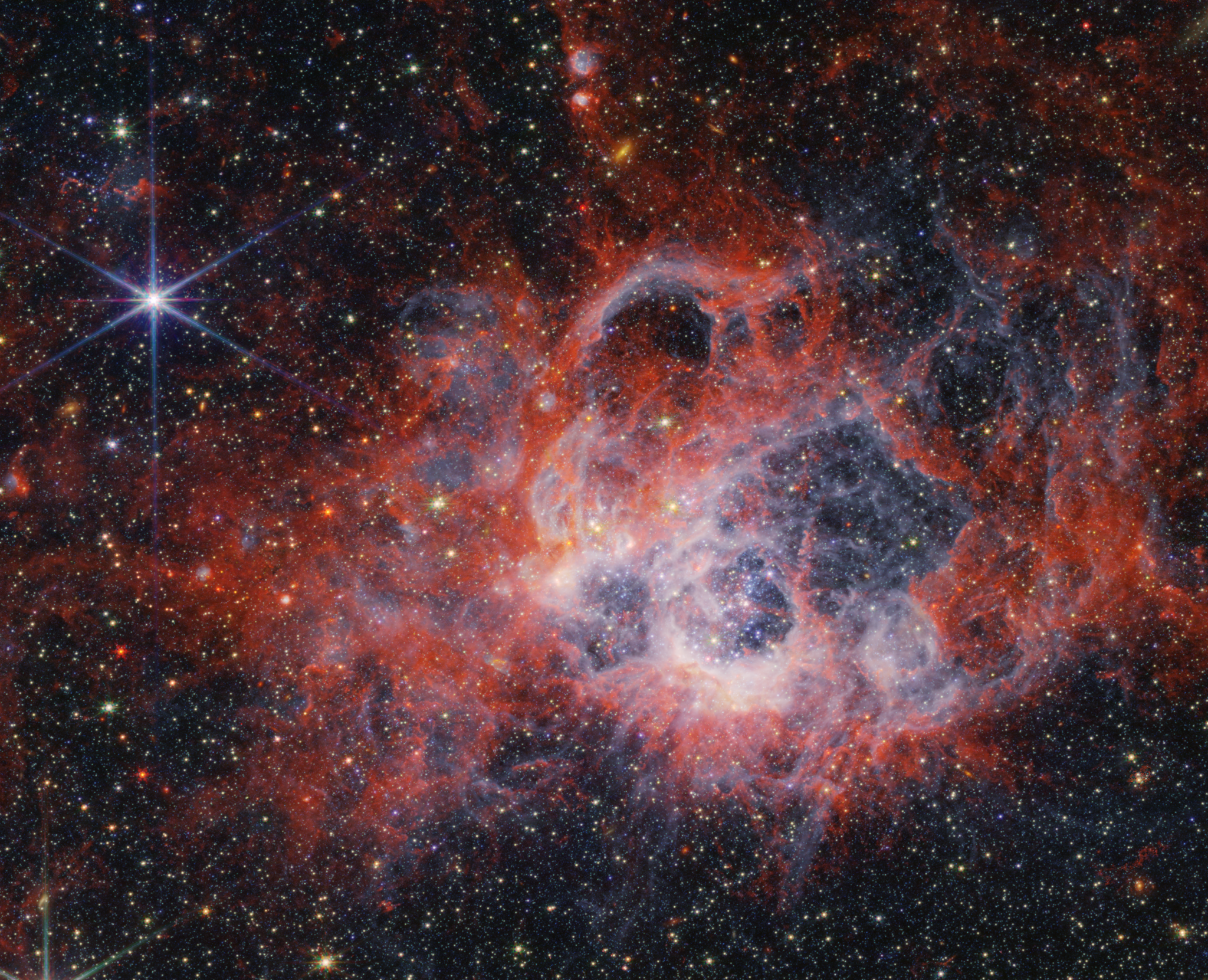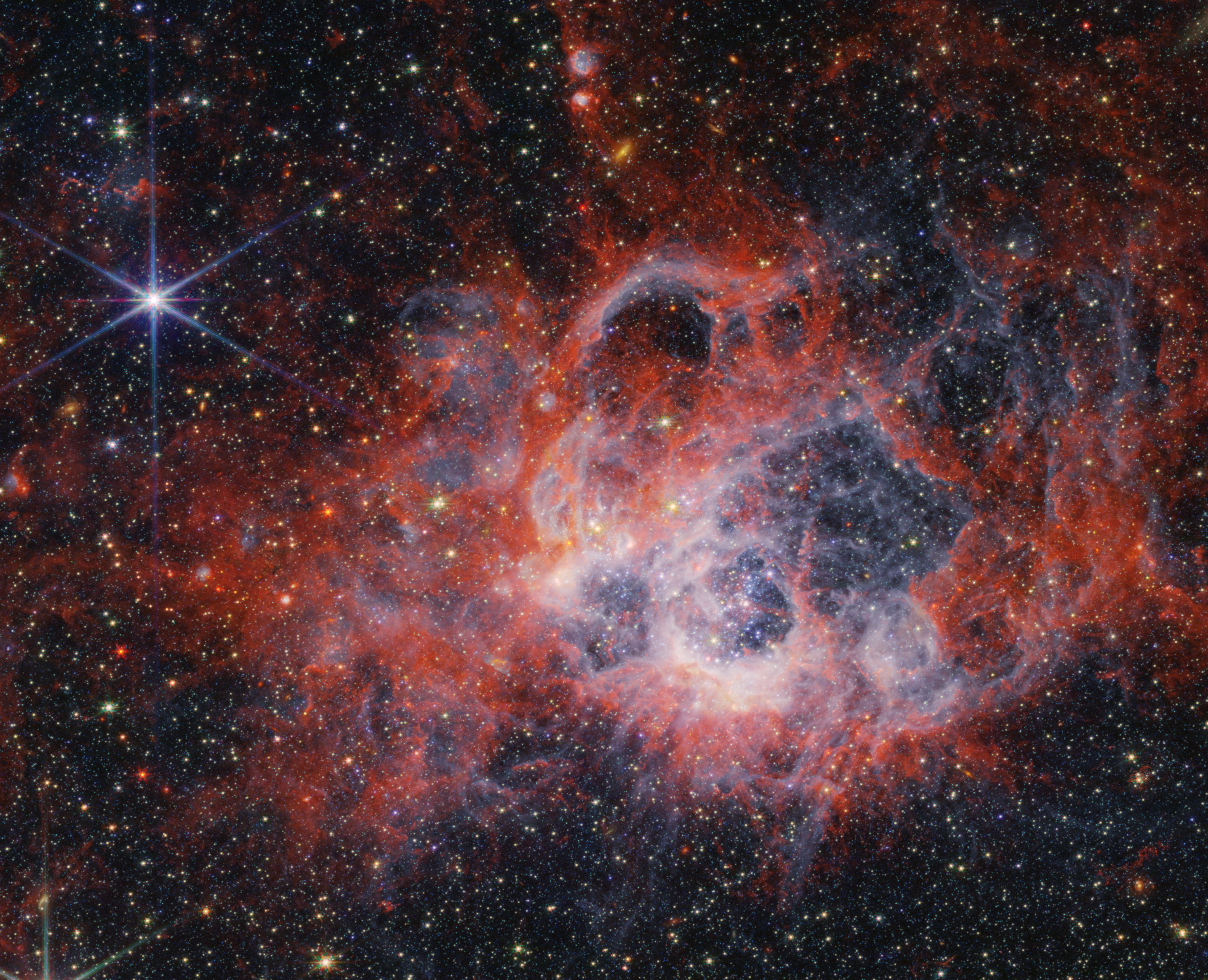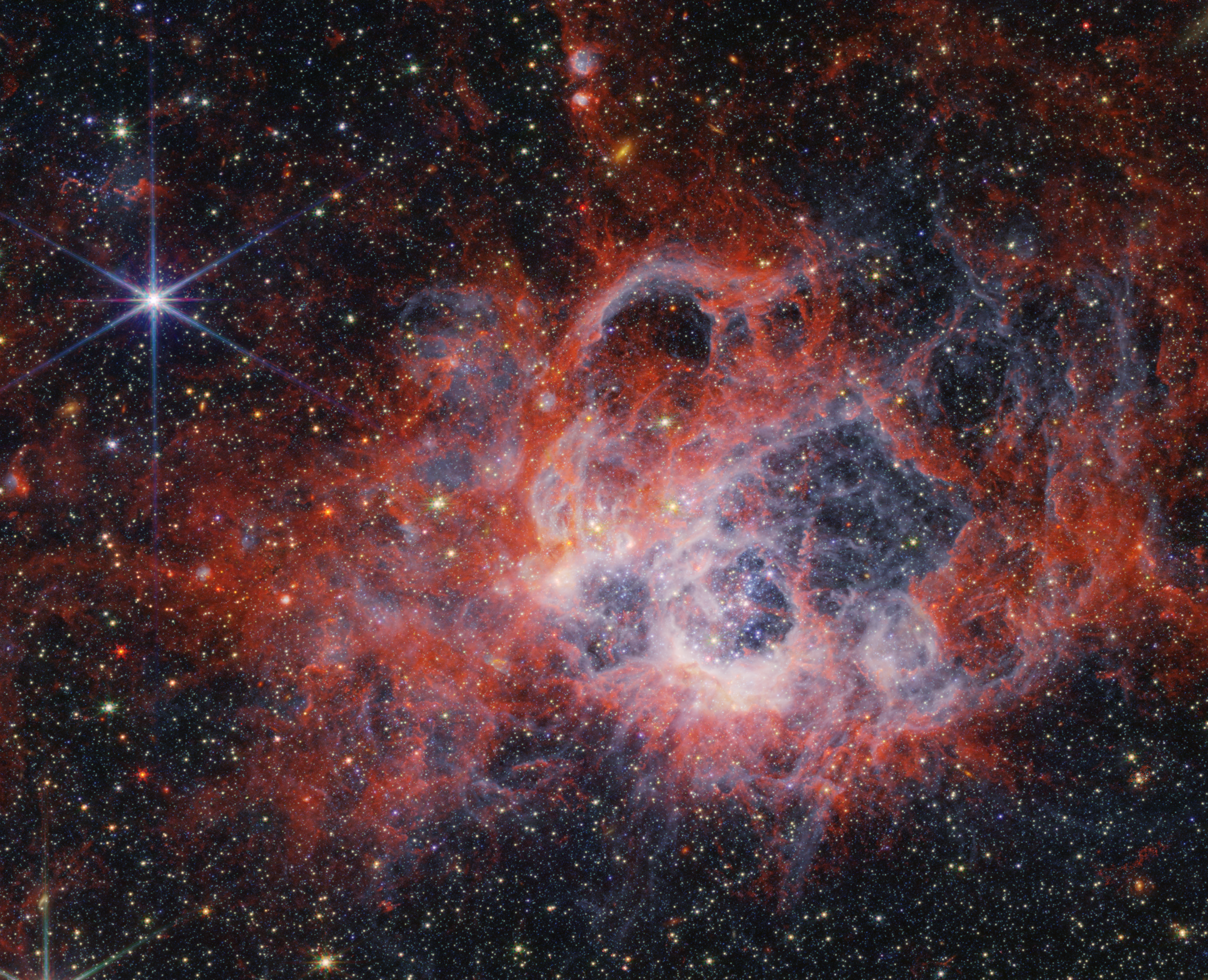 This image from NASA’s James Webb Space Telescope’s NIRCam (Near-Infrared Camera) of star-forming region NGC 604 shows how stellar winds from bright, hot young stars carve out cavities in surrounding gas and dust.NASA, ESA, CSA, STScI In this image released on March 9, 2024, the NIRCam (Near-Infrared Camera) on NASA’s James Webb Space Telescope gives us a more detailed view of a well-studied but still mysterious region, NGC 604. The most noticeable features are tendrils and clumps of emission that appear bright red, extending out from areas that look like clearings, or large bubbles in the nebula. Stellar winds from the brightest and hottest young stars have carved out these cavities, while ultraviolet radiation ionizes the surrounding gas. This ionized hydrogen appears as a white and blue ghostly glow.
This image from NASA’s James Webb Space Telescope’s NIRCam (Near-Infrared Camera) of star-forming region NGC 604 shows how stellar winds from bright, hot young stars carve out cavities in surrounding gas and dust.NASA, ESA, CSA, STScI In this image released on March 9, 2024, the NIRCam (Near-Infrared Camera) on NASA’s James Webb Space Telescope gives us a more detailed view of a well-studied but still mysterious region, NGC 604. The most noticeable features are tendrils and clumps of emission that appear bright red, extending out from areas that look like clearings, or large bubbles in the nebula. Stellar winds from the brightest and hottest young stars have carved out these cavities, while ultraviolet radiation ionizes the surrounding gas. This ionized hydrogen appears as a white and blue ghostly glow.
Image Credit: NASA, ESA, CSA, STScI


